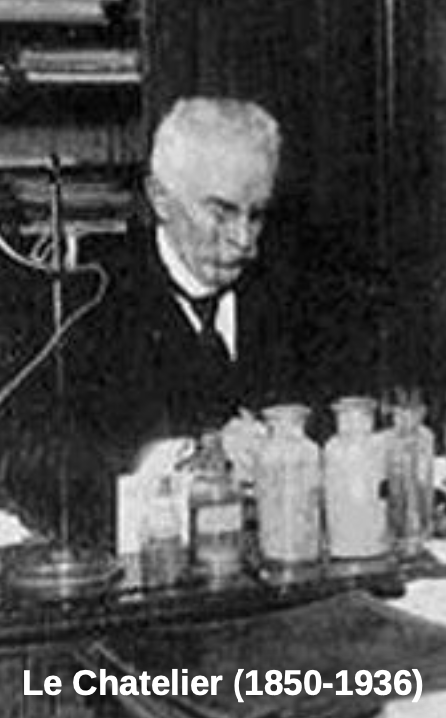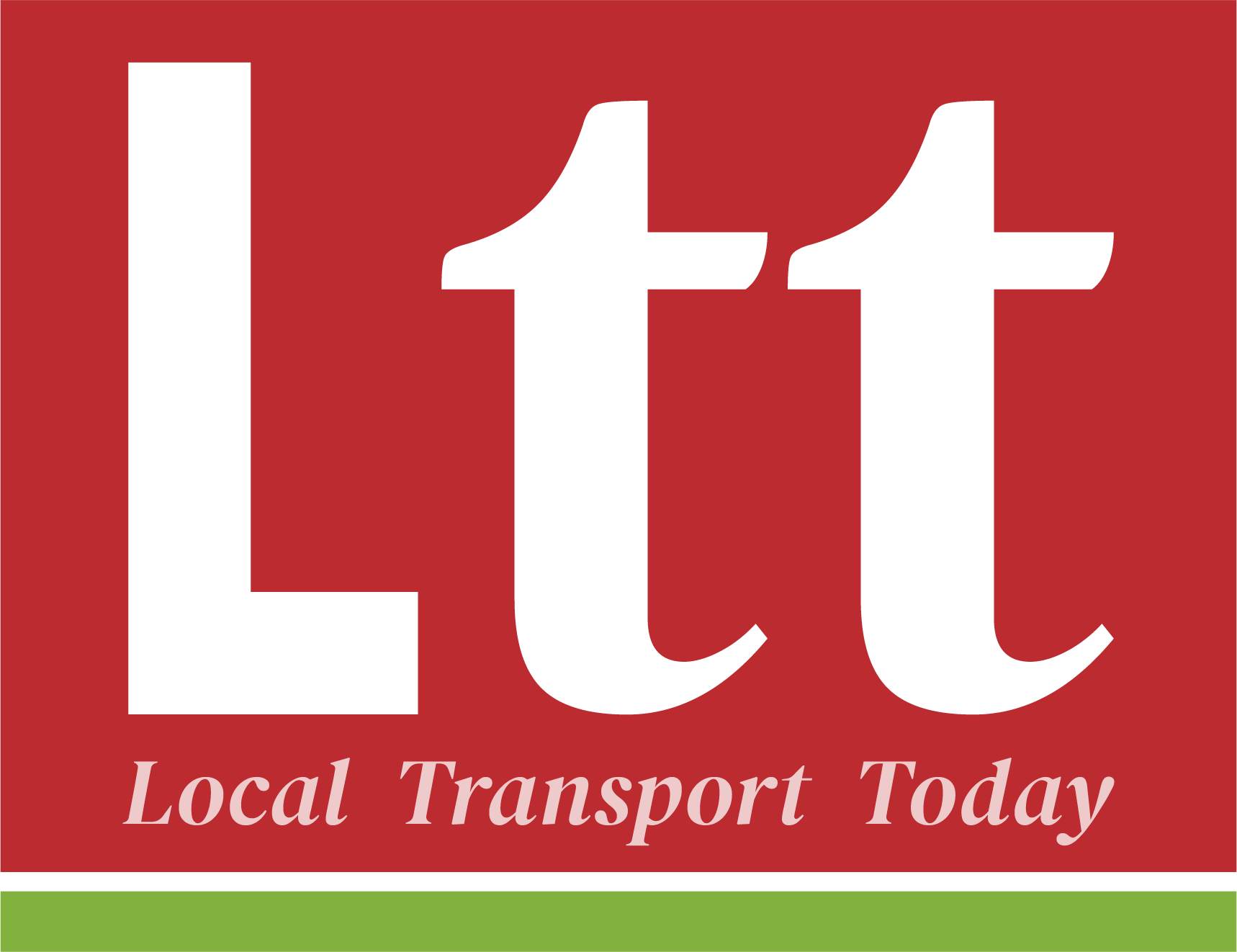Le Chatelier’s principle -
protecting road projects from the rigours of consistent appraisal

Despite significant work to improve and refine the way road schemes are appraised and evaluated, they seem to still be having a charmed life in terms of winning approval and funding, says Phil Goodwin. He reflects on why this might be happening, drawing on the thoughts of a pioneering French scientist.
HENRY LOUIS LE CHATELIER, a French chemist (1850-1936), explained how a chemical system in equilibrium, subjected to a change in conditions, reacts in such a way as to partly offset the effects of the change. There’s a fuller explanation at the foot of this page. Something of the sort seems to have happened over many years with successive attempts to subject road proposals to a rigorous and objective appraisal. These have only been partly successful, due to the repeated loopholes, reinterpretations, application of constraints and ingenious devices which have served to minimise the effectiveness of the appraisal as an avowed disinterested process.
The only really material outcome of this period of pretence has been an enormous expansion in the number of pages of appraisal reports, and the budget for consultancy studies, but the startling survival of results which are little changed from the early days of ‘predict and provide’. This combined a rather crude economic forecast – people will get richer and buy more cars – with an elegant proposition of traffic science attesting that when there is more traffic, speed goes down. The result was a powerful argument for the need for substantial road building, and as a result the Motorway network emerged.
This justificatory process was full of flaws that appraisal guidance, based on decades of research and practice – and some intellectual battles - sought in due course to correct. Successive guidelines have included accepting the significance of induced traffic, the complexities of changes in behaviour over time, the importance of non-vehicle travel, the unexpected economic success of pedestrian town centres, and the policy paradoxes embodied in the relationship between speed and traffic flow, of which the most important was the counter-intuitive ability of public transport – even buses - to move people more efficiently than faster cars.
Thus, now it is routine to stress that appraisal should clearly state objectives, include sound estimates of effects on air quality, climate, safety, traffic, health, the importance of travel time, effort, and convenience. It is also generally acknowledged that there are always different ways to achieve the objectives, and so alternative approaches should always be considered, both at the initial inception stage and also again when projects start to be defined in detail. Likewise, that meanwhile it is necessary to accept that there are often unintended consequences, and these should be honestly explored, including the reality that interventions which benefit one group of people typically impose costs on other groups, so that ‘total benefit’ includes equity and fairness. Behavioural responses are complex, and different in the short and long run. The perceived needs of current generations should not be met in a way which prevents future generations from meeting their own needs. With some variation in wording, all these principles are, in general, now reasonably well laid out in the preambles and principles at the beginning of appraisal manuals.
The principle named after French chemist Henry Louis Le Chatelier can, according to Wikipedia, be stated as being:
When any system at equilibrium for a long period of time is subjected to a change in concentration, temperature, volume, or pressure, (1) the system changes to a new equilibrium, and (2) this change partly counteracts the applied change.
It is common to treat the principle as a more general observation that when a settled system is disturbed, it will adjust to diminish the change that has been made to it or, roughly stated, any change in status quo prompts an opposing reaction in the responding system.

But all too often the practice does not live up to these principles. I think the most serious examples of this are seen in the big ‘flagship’ road projects, whose formal appraisal is carried out by the project promoter. What seems to happen is that voluminous reports of studies are written, which inexorably find reasons for dismissing the relevance of issues which tend to act against the advocated project and highlighting the arguments in its favour. In line with Le Chatelier’s principles the system battles against appraisal disturbances, and seeks to restore its initial equilibrium.
Here are ten examples:
-
There is almost never a stage in project formulation which carries out a systematic investigation of whether there are better ways of making improvements than expanding road capacity. It is always seemingly either too early or too late to do this, and by the time the project is worked up in sufficient detail to be included in the road programme, it is then exempt from the need to consider other alternatives than detailed design or alignment. The irony here is that it has been the Department for Transport itself which has often showed the appraisal merit in such alternatives, such as its classic 2006 study which showed that a form of demand management using road pricing would produce many times higher benefits - and much saving in costs – than a much bigger road building programme (Department for Transport (2006) Transport Demand to 2025 and the Economic Case for Road Pricing and Investment).
-
The largest quantified benefit is nearly always a scheme’s supposed contribution to reducing traffic congestion, even in cases where the initial objectives do not treat this as the most important aim. But the reductions are calculated assuming one predominant future: a baseline which has always – even still now – been one of the inevitable traffic growth continuing indefinitely into the future, and therefore resultant congestion assumed to be getting worse. Other futures are accepted in theory but have not been used as the core basis for appraisal.
-
The comparison of baseline and forecast changes in traffic speed most commonly results in a long term forecast of increasing congestion and reducing speeds. So the estimated ‘improvement in congestion’ is treated as a benefit, even if the scheme does not actually make it better, but just slows down the pace at which it gets worse. In presentation this is always described as ‘saving time’, leading to unrealistic and undelivered expectation of improvement.
-
Climate change – accepted in principle as one of the most important of Government policy priorities – is minimised in appraisal by a unique doctrine called ‘de minimis’, which expresses the carbon consequences of any one road scheme as a minutely small percentage of the total carbon emitted from all sources, and which thus be acceptably ignored.
-
Climate change is also ignored in the ‘base-line’ of what would happen if there were no policy interventions - even those which the Government has declared it will implement. So the consequence of unimpeded traffic growth – which, on a global scale, is one of the most important sources of carbon growth - is assumed to be a future of rising congestion, but not one of fundamental damage to physical and economic geography. A few sentences claiming that any road project (more or less by definition) will increase the ‘resilience’ of the network against climate change serves to dismiss the problem rather than deal with it.
-
Highway appraisals simultaneously assume traffic growth without policy intervention when calculating congestion benefits but assume lower carbon emissions resulting from policy interventions which will reduce traffic growth.
-
The amount of induced traffic is routinely underestimated.
-
It is – now – mostly accepted that an increase in the amount of active travel people undertake will result in health improvements which have an economic value. This is quite rightly taken into account in appraisal of active travel schemes, and a benefit is accorded when an active travel improvement results in attracting some people to use cars less. But a road improvement, which attracts some people to walk or cycle less and drive more, is never assessed as having any negative health impact, if it is assessed at all.
-
There is a much lower barrier or level of scrutiny when including a new item in the appraisal which appears to improve the scheme’s performance, than a new item which reduces it. This has been seen in the calculation of a deeply flawed ‘heritage value’ for the Stonehenge-A303 tunnel, without which the business case for the scheme disappears. It is also seen, since the SACTRA study of transport and the economy, in the addition of a mark-up for ‘wider economic benefits’, but which has never been mirrored by inclusion of ‘wider economic costs’ which must symmetrically apply (for example when costs charged to users are less than the external social costs).
-
When individual schemes are considered, especially when the apparent benefits seem small (of a type which critics suggest will only be moving a queue a mile or so down the road, with little or no overall benefit), it is always stated that this is part of a much longer improvement of the whole route when the benefits will be substantial. However, when there is a request to see the calculations for the combined effects of all proposed schemes on the route – even a request from the Secretary of State for Transport – National Highways reply that they are under no legal obligation to make such a calculation, and are technically unable to do so.
Each of these inputs produces a more favourable result for a scheme than would apply if a more rigorous appraisal were carried out: in effect, the practices provide a sort of ‘safe space’ for road projects insulating them from more testing appraisal. In some cases, the justifications for these practices rest on rather obscure sections – sometimes even just a sentence – in a policy document or statement whose main significance seems to be quite otherwise. (For example the sentence from 2014 cited to justify treating carbon emissions as insignificant).
All this invariably means objections so often find themselves engrossed in legal challenges – sometimes successful, sometimes not, but never actually based on the logical merits of the appraisal argument. This is left to professional discussion for which the forums and methods of resolution are slow, relatively obscure, and sometimes simply met by silence. The Examining Authorities in specific contested enquiries also have a chequered history, sometimes being willing to take on such criticisms, and sometimes not. ‘TAG-compliance’ is never clearly defined, is always claimed, and is essentially a process of self-certification by promoters. There is no independent, statutory, professional body able to look at decisions on appraisal. Which is why in recent years the professional institutions connected with transport and planning have from time to time submitted their own views and critiques – including many of the points above. As have objectors and campaigners, with whom professionals have often found themselves in sympathy.
So what is the answer to all this? I have three suggestions.
First, if the underlying principles of appraisal are now sufficiently broad and logical, then they deserve to be applied consistently, removing the ‘protected space’ which means that road projects are not routinely subject to testing and scrutiny of their weaknesses.
Secondly, the appraisal ‘baseline’ must change. There are two genuinely realistic futures for the shape of human society, one with extreme climate change, and the other with the successful implementation of policies to avert it. The present assumptions of indefinite traffic growth and no climate change are logically inconsistent, and therefore cannot realistically be the base of coherent appraisal of projects, programmes, or policies.
It is notable that the devolved administrations in both Scotland and Wales have changed their practice on this. Scotland has taken a baseline for appraisal based on a 20% reduction in overall traffic, and Wales a 10% reduction. This approach is not sufficient on its own – it puts more focus on the measures necessary to achieve those results, quite rightly. But this only makes explicit what England will also have to do, implicitly, which would then mean that there could be a logical base for the appraisal of specific schemes. The Welsh experience of pausing projects and subjecting them all to a professionally qualified, independent, review is very impressive (though it may not necessarily make them immune from the Le Chatelier process). And I know many professionals – including some of those consultants who make their living on carrying out appraisals for National Highways – who would welcome the chance of contributing to such an independent review for England.
And thirdly, does not this all again raise the recurrent question of whether it is sensible to take the control and responsibility for appraisal away from the scheme Promoters? The existence of the ‘safe space’ I have described has, in effect, preserved the continuation of ‘predict and provide’ thinking for decades after appraisal improvements should have ended it.
Further contributions on the issues raised are welcome. Please send to hello@lttmagazine.co.uk
Phil Goodwin is Emeritus Professor of Transport Policy at UCL and UWE, and Senior Fellow of the Foundation for Integrated Transport.
Email: philinelh@yahoo.com
(c) 2022 LTT Magazine and lttmagazine.co.uk
